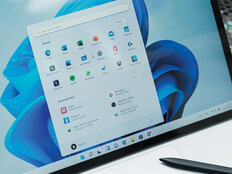To best chart their course forward, institutions must identify the types and number of devices that need to be replaced, which is something a trusted partner can help with. Institutions that have purchased from CDW, for instance, can go into their online portal to quickly see which devices are due for a refresh. And with CDW’s Readiness Assessment for Windows 11, schools that originally acquired their Microsoft devices elsewhere can acquire similar support.
Most Windows 10 devices purchased within the past few years are compatible with Windows 11, so it’s possible your institution’s refresh needs will be minimal. Still, it’s worth assessing now. That way, if you determine you have hundreds or even thousands of incompatible devices, you have more time to pivot accordingly.
2. Determine Whether You Can Refresh Your Devices Now
Once you know which devices need to be refreshed, it’s important to determine when you can upgrade them. This timeline may vary based on an institution’s size and resources, along with the scope of devices that need to be replaced, so while some schools may be able to replace all outdated devices before Oct. 14, others may not be.
If an institution can afford to refresh devices in a timely manner, it should establish a pathway to do so. Schools that can’t afford this should refresh the devices they can before the Windows 10 end-of-support date, then strategize how to handle the rest.
DISCOVER: Higher ed device management requires a holistic approach.
3. Strategize to Secure the Devices You Can’t Refresh This Year
While free, automatic security support and other system updates for Windows 10 are going away Oct. 14, it’s possible for institutions to continue receiving Windows 10 support after this date — they’ll just have to pay for it. The Windows 10 Extended Security Updates program offers customized support on an annualized basis. And while this isn’t a forever fix, it can be a short-term solution if the situation calls for it.
Institutions can leverage the ESU program for devices they aren’t able to replace before the Windows 10 end-of-support date, giving them more time to fully migrate to Windows 11. That could be helpful if an institution has yet to purchase Windows 11 devices, or if it has used a buy-and-hold program but needs more time to distribute and integrate the devices.
Ultimately, there are many routes higher education institutions can take to transition from Windows 10 to Windows 11. By going through these steps along with a Windows 11 readiness assessment, they won’t need to panic when Oct. 14 arrives.












